Women’s History in STEM
Women throughout history have shaped the way we understand science, technology, engineering, and mathematics. Often not recognized for it at the time, women have made groundbreaking discoveries and game changing research in the STEM careers they pursued. Shedding light on their stories honors their incredible impact and encourages young girls to see a place for themselves in STEM. Creating an inclusive environment that empowers students is an imperative part of being a STEM educator.
The number of women who have made their mark on our history couldn’t possibly be contained by one list. This resource of 50 women in STEM can be used during Women’s History Month but we encourage educators to use it year round to celebrate, recognize, and uplift these inspiring individuals. Each woman has a short introduction with their biography linked, a scopes lesson we recommend, books for a range of reading levels, educational video links, and a career connection that can be made with your students.
50 Historical Women in STEM
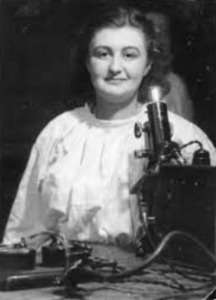
1. June Almeida, Virologist (1930-2007)
June Almeida pioneered immune electron microscopy to identify and visualize viruses, including rubella, the structure of hepatitis B, and the first human coronavirus. (Biography)
Try this Scopes lesson: Virtual Reality Cell Creation
Book Recommendations: June Almeida, Virus Detective!: The Woman Who Discovered the First Human Coronavirus by Suzanne Slade (K-3rd Primary), Hidden Worlds: Looking Through a Scientist’s Microscope by Stephen Kramer, Dr June Almeida — The Woman Who Discovered The First Human Coronavirus By Arunima Singh (Article for 6th-12th Middle-High School)
Video: JUNE ALMEIDA – The first person to discover Coronavirus
Career connection: Microbiologist
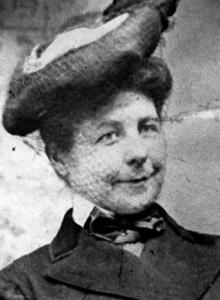
2. Mary Anderson, Inventor (1866-1953)
Mary Anderson designed a swinging arm solution for removing water from car windshields–the windshield wiper. (Biography)
Try this Scopes lesson: 3D Printed Grabbers (connection: inventions that make life easier)
Book Recommendations: The Woman Who Invented Windshield Wipers: Mary Anderson and Her Wonderful Invention (Inventors at Work!) by Sara L. Latta (3rd-5th Intermediate), Mary Anderson and Windshield Wipers by Ellen Labrecque (3rd-5th Intermediate)
Video: The Windshield Wiper: A Female Innovation
Career connection: Commercial & Industrial Designer
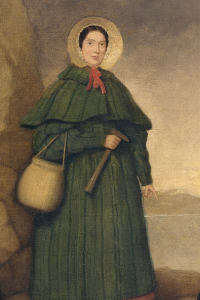
3. Mary Anning, Paleontologist (1799-1847)
Mary Anning collected fossils and made important Jurassic discoveries at Lyme Regis, including ichthyosaur, plesiosaur, and pterodactyl skeletons. (Biography)
Try this Scopes lesson: Adapt Or Die
Book Recommendations: Stone Girl Bone Girl: The Story of Mary Anning of Lyme Regis by Laurence Anholt (K-3rd Primary), Mary Anning’s Curiosity by Monica Kulling (4th-6th Intermediate), Fossil Hunter: How Mary Anning Changed the Science of Prehistoric Life by Cheryl Blackford (Middle School), Remarkable Creatures by Tracy Chevalier (High School)
Video: Mary Anning – Fossil Hunter
Movie: Ammonite (2020)
Career connection: Geoscientist
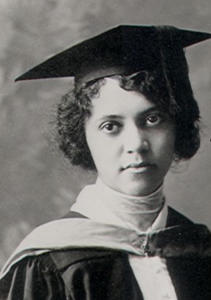
4. Alice Ball, Chemist (1892-1916)
Alice Ball developed an injectable treatment for leprosy. (Biography)
Try this Scopes lesson: Sew Your Own Smart Crystal Lam
Book Recommendations: The Story of Alice Ball by Jennifer Lerud
Video: Alice Ball – Unsung Heroes of Science 2022
Career connection: Biochemist
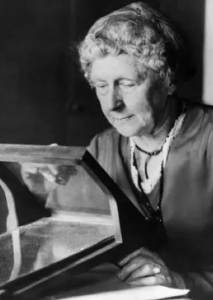
5. Annie Jump Cannon, Astronomer (1863-1941)
Working at Harvard College Observatory as part of a group sometimes now referred to as “Pickering’s women,” Annie Jump Cannon developed the Harvard Classification Scheme, a system that classifies a star based on its temperature and spectra. (Her work on this system continued and evolved the work of other women who had worked for Pickering, including Williamina Fleming.) Cannon’s system classifies spectra using the letters O, B, A, F, G, K, M, rankings that correspond to temperature (hot to cold). After assigning the spectral type letter, Cannon’s system assigns a sub-class using numbers from 0 to 9. (Biography)
Try this Scopes lesson: How To Hold A Dead Star In Your Hand
Book Recommendations: Annie Jump Cannon, Astronomer by Carole Gerber (Author), Christina Wald (Illustrator) (4th-6th Intermediate)
Video: Annie Jump Cannon: Unsung Heroes of Science 2020
Career connection: Astronomer
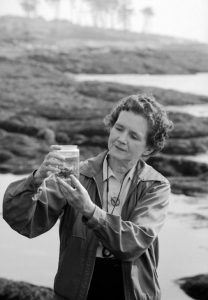
6. Rachel Carson, Ecologist and Conservationist (1907-1964)
Rachel Carson wrote Silent Spring (1962) about the dangers of pesticides. (Biography)
Try this Scopes lesson: Wind Turbine STEM Digital Fabrication Challenge, DIY Biomaterials With Acorn Flour
Book Recommendations: Spring After Spring: How Rachel Carson Inspired the Environmental Movement by Stephanie Roth Sisson (Author, Illustrator) (K-3rd Primary), Girls Who Looked Under Rocks by Jeannine Atkins (Author), Paula Conner (Illustrator) (Middle School), Silent Spring by Rachel Carson (Author) (High School)
Video: How one scientist took on the chemical industry – Mark Lytle
Career connection: Science Writer, Environmental Scientist
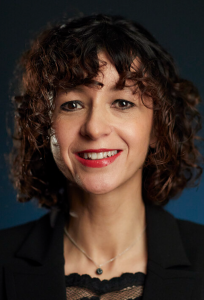
7. Emmanuelle Charpentier, Biochemist (1968-)
Emmanuelle Charpentier was co-recipient of the 2020 Nobel Prize in Chemistry for her pioneering, with Jennifer Doudna, the use of CRISPR-Cas9 genetic scissors to edit DNA. (Biography)
Try this Scopes lesson: DNA Extraction
Book Recommendations: A CRISPR Revolution: A CRISPR Revolution by Sahotra Sarkar
Movie: Human Nature (2019)
Career connection: Biochemist
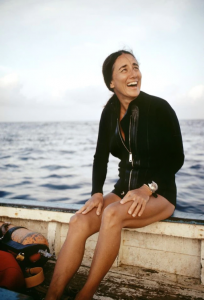
8. Eugenie Clark, Ichthyologist (1922 – 2015)
Dr. Eugenie Clark known as The Shark Lady, was an American ichthyologist known for both her research on shark behavior and her study of fish in the order Tetraodontiformes. Clark was a scientific pioneer who greatly contributed to the knowledge of sharks and worked to improve sharks’ reputation in the public eye. She used her fame to promote marine conservation. (Biography)
Try this Scopes lesson: Fabricating Turtles To Understand Turtles
Book Recommendations: Shark Lady: The True Story of How Eugenie Clark Became the Ocean’s Most Fearless Scientist by Jess Keating (Author), Marta Álvarez Miguéns (Illustrator) (K-3rd Primary), Eugenie Clark: Adventures of a Shark Scientist by Ellen R. Butts (Author), Joyce R. Schwartz (Author) (3rd-5th Intermediate)
Video: The Shark Lady – Eugenie Clark
Career connection: Marine Biologist, Zoology
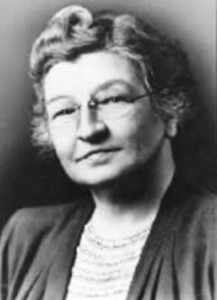
9. Edith Clarke, Electrical Engineer (1883-1959)
Edith Clarke developed the Clarke Calculator in 1921, a graphing calculator used to help solve electric power transmission problems. (Biography)
Try this Scopes lesson: Popsicle Flashlights – Simple Circuits With A Switch, Electronics Concepts
Book Recommendations: The Brilliant Calculator: How Mathematician Edith Clarke Helped Electrify America by Jan Lower (Author), Susan Reagan (Illustrator) (3rd-5th Intermediate)
Video: Energy Innovators: 3 Facts About Edith Clarke
Career connection: Electrical & Electronics Engineer
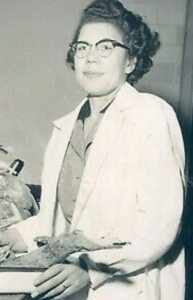
10. Margaret Collins, Entomologist and Zoologist (1922-1996)
Margaret Collins was an entomologist and zoologist. Known as the “Termite Lady” for her extensive research on termites, she co-discovered the Neotermes luykxi species of termites. (Biography)
Try this Scopes lesson: Butterfly Designer
Video: DRAFT Sample: Margaret Collins
Career connection: Zoologist and Wildlife Biologist
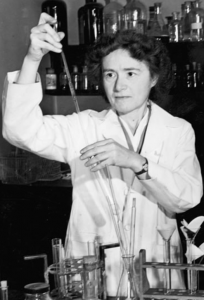
11. Gerty Cori, Biochemist (1896-1957)
Gerty Cori was the first woman in America to win a Nobel prize in science when she co-won in 1947 for work on glycogen metabolism (and what became known as the Cori cycle or lactic acid cycle). (Biography)
Try this Scopes lesson: Fabricated Cell Models
Book Recommendations: Crucible of Science: The Story of the Cori Laboratory by John H. Exton (Author) (High School)
Video: Jewish women in the sciences: Nobel Prize winner Gerty Cori
Career connection: Biochemist
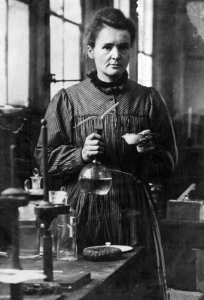
12. Marie Curie, Physicist and Chemist (1867-1934)
Marie Curie is known for her work with radioactivity and co-discovery of polonium and radium. Curie was the first woman to win a Nobel prize in science (in 1903 in physics). She won again in 1911 in chemistry. (Biography)
Try this Scopes Lesson: Sew Your Own Smart Crystal Lamp
Book Recommendations: Marie Curie and the Power of Persistence by Karla Valenti (Author), Micaela Crespo Quesada Annalisa Beghelli (Illustrator) (K-3rd Primary), The Story of Marie Curie: A Biography Book for New Readers by Susan B. Katz (Author) (4th-6th Intermediate), Marie Curie: The Woman Who Changed the Course of Science by Philip Steele (Author) (Middle School), Ten Women Who Changed Science and the World: Marie Curie, Rita Levi-Montalcini, Chien-Shiung Wu, Virginia Apgar, and More (Trailblazers, Pioneers, and Revolutionaries) by Catherine Whitlock (Author) Rhodri Evans (Author) (High School)
Video: The genius of Marie Curie – Shohini Ghose
Career connection: Physicist
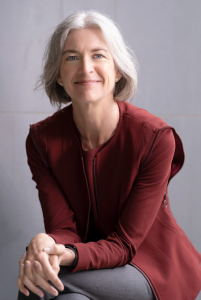
13. Jennifer Doudna, Biochemist (1964-)
Jennifer Doudna was co-recipient of the 2020 Nobel Prize in Chemistry for her pioneering, with Emmanuelle Charpentier, the use of CRISPR-Cas9 genetic scissors to edit DNA. (Biography)
Try this Scopes lesson: DNA Extraction
Book Recommendations: The Code Breaker — Young Readers Edition: Jennifer Doudna and the Race to Understand Our Genetic Code by Sarah Durand (Adapter), Walter Isaacson (Author) (Middle School), A CRISPR Revolution: A CRISPR Revolution by Sahotra Sarkar
Movie: Human Nature (2019)
Video: How CRISPR lets us edit our DNA | Jennifer Doudna
Career connection: Biochemist
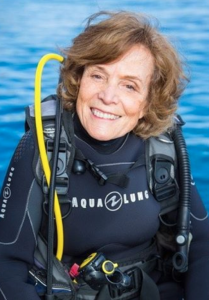
14. Sylvia Earle, Marine Biologist and Oceanographer (1935-)
Sylvia Earle is a marine biologist and oceanographer dedicated to ocean conservation. Sometimes referred to as the “Sturgeon General,” Earle is founder of Mission Blue and has been a National Geographic Explorer-in-Residence since 1999. (Biography)
Try this Scopes lesson: Sea Floor Bathymetry
Book Recommendations: Life in the Ocean: The Story of Oceanographer Sylvia Earle by Claire A. Nivola (4th-6th Intermediate), The World Is Blue: How Our Fate and the Ocean’s Are One by Sylvia A. Earle (Middle School)
Video: Sylvia Earle: How to protect the oceans (TED Prize winner!)
Career connection: Marine Biologist
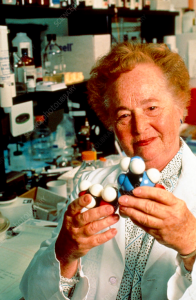
15. Gertrude Elion, Biochemist and Pharmacologist (1918-1999)
Gertrude Elion co-developed drugs for leukemia and Azathioprine, the first immunosuppressant used during organ transplants. She shared the Nobel Prize for Physiology or Medicine in 1988. (Biography)
Try this Scopes lesson: Biomedical Engineer, Biomedical Engineer – Middle School Remix
Book Recommendations: Ten Women Who Changed Science and the World: Marie Curie, Rita Levi-Montalcini, Chien-Shiung Wu, Virginia Apgar, and More (Trailblazers, Pioneers, and Revolutionaries) by Catherine Whitlock (Author) Rhodri Evans (Author) (High School)
Video: Extra Life | Gertrude Elion’s Role in Developing Drugs Made Her a Pioneer of Modern Medicine | PBS
Career connection: Biochemist
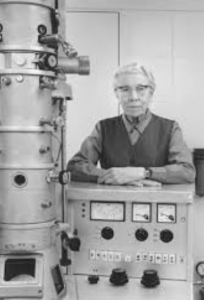
16. Katherine Esau, Botanist (1898-1997)
Katherine Esau studied plant anatomy and the way viruses infect plants. Esau authored multiple textbooks, including Plant Anatomy (1953) and Anatomy of Seed Plants (1960). (Biography)
Try this Scopes lesson: Astroplant
Book Recommendations: Anatomy of Seed Plants by Katherine Esau (Author) (High School)
Video: https://www.youtube.com/watch?v=fB3dtykocmE&ab_channel=EPOSrl-EstrattiPianteOfficinali
Career connection: Plant Scientist
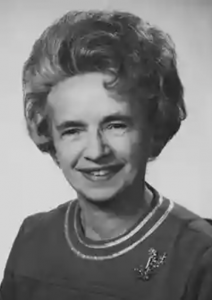
17. Irene Fischer, Mathematician (1907-2009)
Irene Fischer was a mathematician whose work in geodesy included development of the Mercury Datum and research on lunar parallax used during Apollo missions. Her work contributed to what is now the World Geodetic System used by GPS technology. (Biography)
Try this Scopes lesson: Alquimetricos: Open Source DIY/DIT Building Blocks Systems
Video: Irene Fischer: Geospatial Pioneer
Career connection: Mathematician
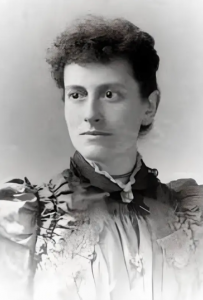
18. Williamina Fleming, Astronomer (1857-1911)
Working on photographic spectroscopy for Edward Charles Pickering at Harvard College Observatory, Williamina Fleming helped develop a system for cataloging the brightness of stars based on the amount of hydrogen observed in their spectra. This system was used in the first edition of the Draper Catalog of Stellar Spectra (1890). (Fleming’s system was later replaced by the work of Annie Jump Cannon.) Fleming discovered the Horsehead Nebula in constellation Orion in 1888. (Biography)
Try this Scopes lesson: How To Hold A Dead Star In Your Hand
Book Recommendations: She Caught the Light: Williamina Stevens Fleming: Astronomer by Kathryn Lasky (Author), Julianna Swaney (Illustrator) (K-3rd Primary) The Glass Universe: How the Ladies of the Harvard Observatory Took the Measure of the Stars by Dava Sobel (Author)
Video: This astronomer discovered over 300 stars during her career| Unladylike2020 | American Masters | PBS
Career connection: Astronomer
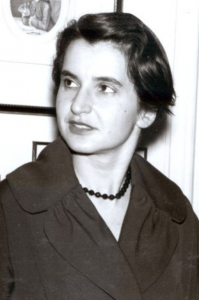
19. Rosalind Franklin, Chemist and Crystallographer (1920-1958)
Rosalind Franklin was a chemist and crystallographer whose X-ray diffraction of images helped uncover the double-helix structure of DNA. (Biography)
Try this Scopes lesson: DNA Exploring With Foldscope
Book Recommendations: Rosalind Franklin by Maria Isabel Sanchez Vegara (Author), Naomi Wilkinson (Illustrator) (K-3rd Primary) She Persisted: Rosalind Franklin by Kimberly Brubaker Bradley (Author), Chelsea Clinton (Author), Alexandra Boiger (Illustrator), Gillian Flint (Illustrator) (1-4th Primary), Rosalind Franklin (A Life Story) by Michael Ford (Author) (5th-7th Intermediate) Rosalind Franklin: The Dark Lady of DNA by Brenda Maddox (Author) (Middle School), The Secret of Life: Rosalind Franklin, James Watson, Francis Crick, and the Discovery of DNA’s Double Helix by Howard Markel (Author) (High School)
Video: Rosalind Franklin: DNA’s unsung hero – Cláudio L. Guerra
Career connection: Chemist
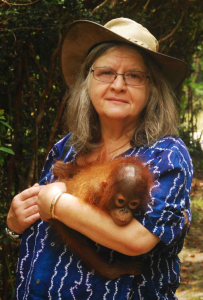
20. Biruté Galdikas, Zoologist and Primatologist (1946-)
Biruté Galdikas is known for her field work with orangutans in Indonesian Borneo. (Biography)
Try this Scopes lesson: Animal Engineers & Designing For Survival Needs
Book Recommendations: Undaunted: The Wild Life of Biruté Mary Galdikas and Her Fearless Quest to Save Orangutans by Anita Silvey (Author) (4th-6th Intermediate) Primates: The Fearless Science of Jane Goodall, Dian Fossey, and Biruté Galdikas by Jim Ottaviani (Author) Maris Wicks (Illustrator) (Middle School), Reflections of Eden: My Years with the Orangutans of Borneo by Birute M. F. Galdikas (Author) (High School)
Video: Birute Galdikas – Mother to Orangutans
Career connection: Zoologist and Wildlife Biologist
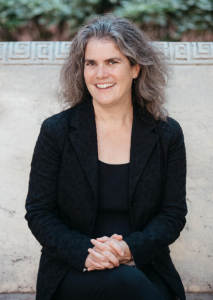
21. Andrea Ghez, Astrophysicist (1965-)
Andrea Ghez received part of the 2020 Nobel Prize in Physics for research with Reinhard Genzel that suggests there is a “supermassive” black hole at the center of the Milky Way galaxy. (Biography)
Try this Scopes lesson: Physics With Arduino
Book Recommendations: You Can Be a Woman Astronomer by Andrea Mia Ghez (Author), Judith Love Cohen (Author), David A. Katz (Illustrator) (3rd-5th Intermediate)
Video: Andrea Ghez: The hunt for a supermassive black hole
Career connection: Astronomer
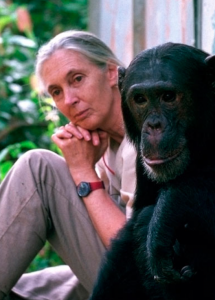
22. Jane Goodall, Zoologist and Primatologist (1934-)
Jane Goodall is known for her field work with chimpanzees in Gombe, Tanzania. (Biography)
Try this Scopes lesson: Testing Insulation
Book Recommendations: The Watcher: Jane Goodall’s Life with the Chimps by Jeanette Winter (Author, Illustrator) (K-3rd Primary), My Life with the Chimpanzees by Jane Goodall (Author) (4th-6th Intermediate), Primates: The Fearless Science of Jane Goodall, Dian Fossey, and Biruté Galdikas by Jim Ottaviani (Author) Maris Wicks (Illustrator) (Middle School), In The Shadow Of Man by Jane Goodall (Author) (High School)
Video: First Look at Jane | National Geographic
Career connection: Zoologist and Wildlife Biologist
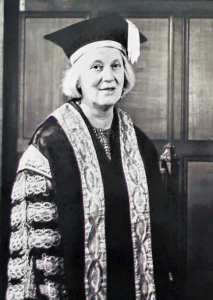
23. Dorothy Hodgkin, Chemist (1910-1994)
Dorothy Hodgkin developed protein crystallography and used x-ray crystallography to identify or confirm the 3-dimensional molecular structure of penicillin, vitamin B-12, and insulin. She won the Nobel Prize in Chemistry in 1964. (Biography)
Try this Scopes lesson: Sew Your Own Smart Crystal Lamp
Book Recommendations: Dorothy Crowfoot Hodgkin: Patterns, Proteins and Peace: A Life in Science by Georgina Ferry (Author) (High School)
Video: The exceptional life of Dorothy Crowfoot Hodgkin | BBC Ideas
Career connection: Chemist
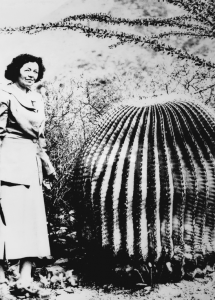
24. Helia Bravo Hollis, Biologist and Botanist (1901-2001)
Helia Bravo Hollis was a biologist and botanist whose research focused on the collection and classification of cacti in Mexico. (Biography)
Try this Scopes lesson: POWAR Plant Observatory of Weather Adaptability for Resiliency
Career connection: Plant Scientist
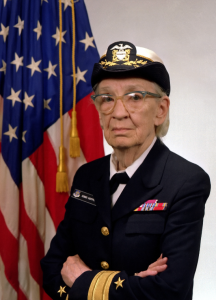
25. Grace Hopper, Computer Scientist (1906-1992)
Grace Hopper was one of the first computer programmers and worked on military calculations using the IBM Automatic Sequence Controlled Calculator (the MARK I) during World War II. While working on the Universal Automatic Computer (UNIVAC I), she developed the first computer compiler, A-0, to automatically translate programming instructions into machine-readable code. Hopper was instrumental in the design and development of “common business-oriented language” (COBOL), a machine-independent computer programming language widely used in the late 1900s. Hopper retired from the U.S. Navy as a rear admiral. (Biography)
Try this Scopes lesson: Learn To Program In C++ With Arduino
Book Recommendations: Grace Hopper: Queen of Computer Code by Laurie Wallmark (Author), Katy Wu (Illustrator) (K-3rd Primary) Mathematician and Computer Scientist Grace Hopper by Andrea Pelleschi (Author) (4th-6th Intermediate) Grace Hopper: Admiral of the Cyber Sea by Kathleen Broom Williams (Author) (High School)
Video: Who is Grace Hopper? Meet the Queen of Code
Career connection: Computer Programmer and Computer Software Engineer
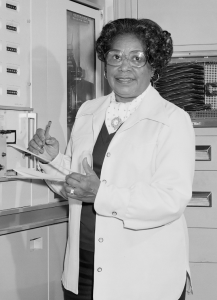
26. Mary Jackson, Engineer and Mathematician (1921-2005)
Mary Jackson was NASA’s first female African American engineer. Jackson was one of the women at NASA whose story was depicted in the Hidden Figures movie. At NASA, she worked on research related to the Supersonic Pressure Tunnel. (Biography)
Try this Scopes lesson: Robotic Shoot
Book Recommendations: Human Computer: Mary Jackson, Engineer by Andi Diehn (Author), Katie Mazeika (Illustrator) (K-3rd Primary), Women Who Count: Honoring African American Women Mathematicians by Shelly M. Jones (Author) (4th-6th Intermediate), Hidden Women: The African-American Mathematicians of NASA Who Helped America Win the Space Race by Rebecca Rissman (Author) (Middle School), Hidden Figures: The American Dream and the Untold Story of the Black Women Mathematicians Who Helped Win the Space Race by Margot Lee Shetterly (Author) (High School)
Movie: Hidden Figures (2016)
Video: The life of the space engineer, Mary Jackson
Career connection: Aerospace Engineer
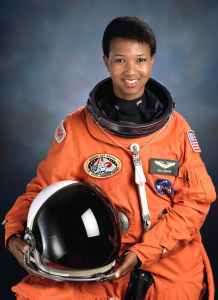
27. Mae Jemison, Astronaut (1956-)
Mae Jemison was the first African American woman in space in 1992 on the Endeavour space shuttle. (Biography)
Try this Scopes lesson: Acrylic Circuits
Book Recommendations: Women in Science and Technology: Mae C. Jemison―The First African-American Female Astronaut by Meeg Pincus (Author), Elena Bia (Illustrator) (1st-3rd Primary), Find Where the Wind Goes: Moments from My Life by Dr. Mae Jemison (Author) (4th-6th Intermediate), Mae Carol Jemison: Astronaut and Educator by Iemima Ploscariu (Author) (Middle School)
Video: Mae Jemison: I Wanted To Go Into Space
Career connection: Aerospace Engineer
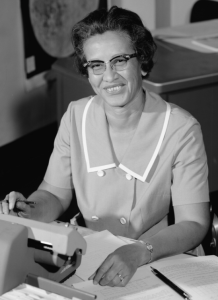
28. Katherine Johnson, Mathematician (1918-2020)
Katherine Johnson was featured in Hidden Figures for her work at NASA. Johnson calculated the flight path for Alan Shepard (the first American in space) and later checked critical flight path calculations for Apollo 13. (Biography)
Try this Scopes lesson: The Infinity Workshop
Book Recommendations: A Computer Called Katherine: How Katherine Johnson Helped Put America on the Moon by Suzanne Slade (Author), Veronica Miller Jamison (Illustrator) (K-3rd Primary) Reaching for the Moon: The Autobiography of NASA Mathematician Katherine Johnson by Katherine Johnson (Author) (4-6th Intermediate), Women Who Count: Honoring African American Women Mathematicians by Shelly M. Jones (Author) (4th-6th Intermediate), Hidden Women: The African-American Mathematicians of NASA Who Helped America Win the Space Race by Rebecca Rissman (Author) (Middle School), My Remarkable Journey: A Memoir by Katherine Johnson (Author), Joylette Hylick (Author), Katherine Moore (Author) (High School), Hidden Figures: The American Dream and the Untold Story of the Black Women Mathematicians Who Helped Win the Space Race by Margot Lee Shetterly (Author) (High School)
Movie: Hidden Figures (2016)
Video: NASA Trailblazer: Katherine Johnson | National Geographic
Career connection: Mathematician
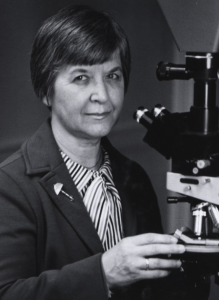
29. Stephanie Louise Kwolek, Chemist (1923-2014)
Stephanie Louise Kwolek invented Kevlar while working at DuPont to develop extremely durable synthetic fibers. Kevlar is used in many products, including bulletproof vests. (Biography)
Try this Scopes lesson: Fabric Sensor: Bend Sensor, Fabric Sensor: Pressure Sensor
Book Recommendations: The Woman Who Invented the Thread That Stops Bullets: The Genius of Stephanie Kwolek (Genius Inventors and Their Great Ideas) by Edwin Brit Wyckoff (Author) (4th-6th Intermediate)
Video: https://www.youtube.com/watch?v=Z51Ye2bgTzg&ab_channel=bitividi
Career connection: Materials Scientist and Engineer
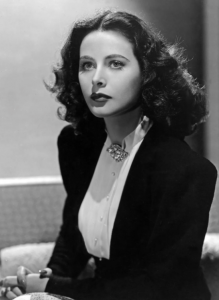
30. Hedy Lamarr, Inventor (1914-2000)
Hedy Lamarr was an actress and inventor whose work co-developing a radio guidance system during WWII helped pave the way for modern Bluetooth, Wi-Fi, and GPS technologies. (Biography)
Try this Scopes lesson: Mp3 Speaker
Book Recommendations: Hedy Lamarr’s Double Life: Hollywood Legend and Brilliant Inventor by Laurie Wallmark (Author), Katy Wu (Illustrator) (K-3rd Primary), Hedy and her Amazing Invention (Amazing Women) by Jan Wahl (Author), Morgana Wallace (Illustrator) (4-6th Intermediate), The Only Woman in the Room: A Novel by Marie Benedict (Author) (High School)
Video: Hedy Lamarr: Mother of Wifi
Career connection: Radio Frequency Engineer
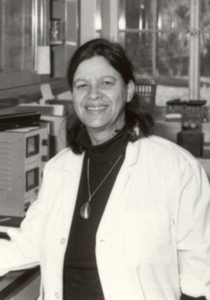
31. Esther Lederberg, Microbiologist and Bacterial Geneticist (1922-2006)
Esther Lederberg discovered the lambda phage, a bacterial virus used in the study of gene regulation and genetic recombination. (Biography)
Try this Scopes lesson: Soap-Making
Book Recommendations: A Hidden Legacy: The Life and Work of Esther Zimmer Lederberg by Thomas E. Schindler (Author) (High School)
Video: https://www.youtube.com/watch?v=vkVjGCsYCaI&ab_channel=HertfordCollege%2COxford
Career connection: Microbiologist
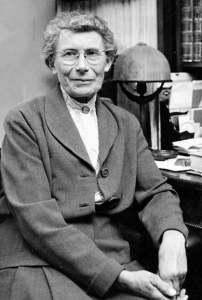
32. Inge Lehmann, Seismologist and Geophysicist (1888-1993)
Inge Lehmann was a seismologist and geophysicist whose analysis of seismic wave data led to her 1936 discovery that the Earth has a solid inner core inside a molten outer core. (Biography)
Try this Scopes lesson: Layers Of The Earth With 3D Printing
Video: Icons In Discovery: Inge Lehmann
Career connection: Geoscientist
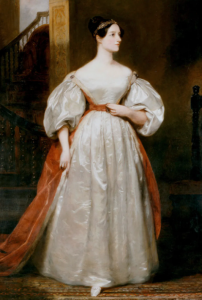
33. Ada Lovelace, Mathematician (1815-1852)
Ada Lovelace is sometimes credited as the first computer programmer because she created the first algorithm used by an early computer prototype. (Biography)
Try this Scopes lesson: Waving Droid
Book Recommendations: Ada Lovelace, Poet of Science: The First Computer Programmer by Diane Stanley (Author), Jessie Hartland (Illustrator) (K-3rd Primary), Ada Lovelace Cracks the Code by Rebel Girls (Author), Marina Muun (Illustrator) (4th-6th Intermediate), Enchantress of Numbers: A Novel of Ada Lovelace by Jennifer Chiaverini (Author) (High School)
Video: Ada Lovelace: Great Minds
Career connection: Computer Programmer
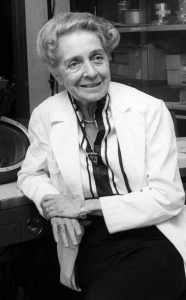
34. Rita Levi-Montalcini, Neurobiologist (1909-2012)
Rita Levi-Montalcini was co-winner of the 1986 Nobel Prize in Physiology or Medicine for co-discovery of the first cellular growth factor identified, Nerve Growth Factor (NGF). (Biography)
Try this Scopes lesson: Neuro-Electronic
Book Recommendations: Ten Women Who Changed Science and the World: Marie Curie, Rita Levi-Montalcini, Chien-Shiung Wu, Virginia Apgar, and More (Trailblazers, Pioneers, and Revolutionaries) by Catherine Whitlock (Author) Rhodri Evans (Author) (High School), Rita Levi-Montalcini: Pioneer & Ambassador of Science by Francesca Valente (Author) (High School)
Video: Rita Levi-Montalcini and the secret of neuronal growth | AMS OpenMind
Career connection: Neurologist
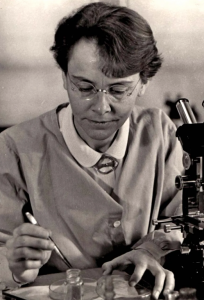
35. Barbara McClintock, Cytogeneticist (1902-1992)
Barbara McClintock was a cytogeneticist who studied chromosomes in maize. She received the 1983 Nobel Prize in Physiology or Medicine for identifying genetic transposition or “jumping genes,” which showed that genes can move to a different location on a chromosome. (Biography)
Try this Scopes lesson: DIY Bio
Video: Profiles in Science – Barbara McClintock (1902-1992)
Career connection: Cytogenetic Technologist
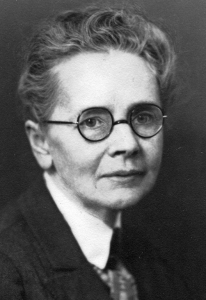
36. Julia Morgan, Civil Engineer and Architect (1872-1957)
Julia Morgan designed and built more than 700 buildings, including Hearst Castle and the bell tower at Mills College, which withstood the 1906 San Francisco earthquake. (Biography)
Try this Scopes lesson: Build & Test Earthquake Proof Buildings, Shapes Into Shelters
Book Recommendations: Drawing Outside the Lines: A Julia Morgan Novel by Susan Austin (Author) (4th-6th Intermediate)
Video: Julia Morgan: Legendary Architect
Career connection: Architect
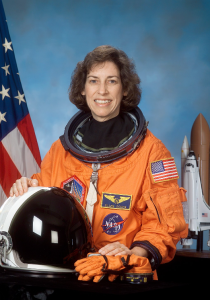
37. Ellen Ochoa, Astronaut and Engineer (1958-)
Ellen Ochoa was the first Hispanic woman in space on the space shuttle Discovery in 1993 and logged almost 1,000 hours in orbit. As a research engineer, she focused on optical systems. She went on to serve as Director of NASA’s Johnson Space Center. (Biography)
Try this Scopes lesson: Drone Design
Book Recommendations: The Astronaut With a Song for the Stars: The Story of Dr. Ellen Ochoa by Julia Finley Mosca (Author), Daniel Rieley (Illustrator) (K-3rd Primary), Astronaut Ellen Ochoa by Heather E. Schwartz (Author) (4th-6th Intermediate)
Video: Ellen Ochoa: The First Female Hispanic Astronaut
Career connection: Aerospace Engineer
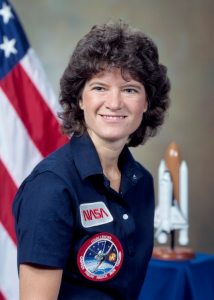
38. Sally Ride, Astronaut (1951-2012)
Sally Ride was the first American woman in space in 1983 on the Challenger space shuttle (STS-7). (Biography)
Try this Scopes lesson: Rocket Science Newton’s Third Law Of Motion
Book Recommendations: Who Was Sally Ride? by Megan Stine (Author), Who HQ (Author), Ted Hammond (Illustrator) (4th-6th Intermediate) Sally Ride: A Photobiography of America’s Pioneering Woman in Space by Tam O’Shaughnessy (Author) (5th-8th), Sally Ride: America’s First Woman in Space by Lynn Sherr (Author) (High School)
Video: Sally Ride: Breaking the Highest Glass Ceiling
Career connection: Aerospace Engineer
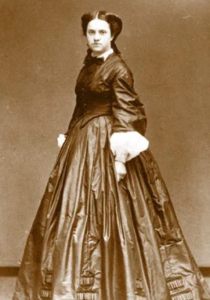
39. Emily Roebling, Engineer (1843-1903)
Emily Roebling helped oversee the construction and completion of the Brooklyn Bridge for more than ten years after her husband, the chief engineer on the project, became ill. (Biography)
Try this Scopes lesson: The Oresmian Coordinate System
Book Recommendations: Secret Engineer: How Emily Roebling Built the Brooklyn Bridge by Rachel Dougherty (Author, Illustrator) (K-3rd Primary), Gutsy Girls Go For Science: Engineers: With Stem Projects for Kids by Diane Taylor (Author), Hui Li (Illustrator) (4th-6th Intermediate) Silent Builder: Emily Warren Roebling and the Brooklyn Bridge by Marilyn E. Weigold (Author) (High School)
Video: The Woman Who Built The Brooklyn Bridge
Career connection: Civil Engineers
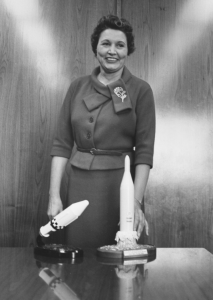
40. Mary Ross, Mathematician (1908-2008)
Mary Ross worked on designs for fighter jet planes at Lockheed Corporation during WWII. She was one of the original 40 members (and only woman) of the secret Skunk Works division. Research there included interplanetary space travel. (Biography)
Try this Scopes lesson: Modeling Flight: The Basics Of Aerospace Engineering
Book Recommendations: Classified: The Secret Career of Mary Golda Ross, Cherokee Aerospace Engineer by Traci Sorell (Author), Natasha Donovan (Illustrator) (3rd-5th Intermediate)
Video: Hidden Figuras: Mary Golda Ross
Career connection: Aerospace Engineer
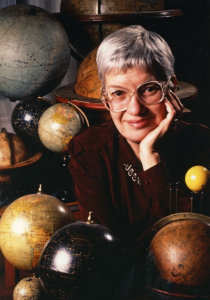
41. Vera Rubin, Astrophysicist (1928-2016)
Vera Rubin was an astrophysicist whose work on galaxy rotation rates provided evidence that dark matter exists in the universe. (Biography)
Try this Scopes lesson: How To Hold A Dead Star In Your Hand
Book Recommendations: The Stuff Between the Stars: How Vera Rubin Discovered Most of the Universe by Sandra Nickel (Author), Aimée Sicuro (Illustrator) (1st-4th Primary), Bright Galaxies, Dark Matter, and Beyond: The Life of Astronomer Vera Rubin by Ashley Jean Yeager (Author) (4th-6th Intermediate), Vera Rubin: A Life by Jacqueline Mitton (Author), Simon Mitton (Author) (Middle School)
Video: How Vera Rubin Found the First Direct Evidence for Dark Matter | Great Minds
Career connection: Astronomer
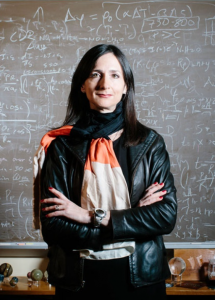
42. Sara Seager, Astrophysicist (1971-)
Sara Seager is an astrophysicist whose research focuses on exoplanets and exoplanet atmospheres. (Biography)
Try this Scopes lesson: Rocket Science Newton’s Third Law Of Motion
Book Recommendations: The Smallest Lights in the Universe: A Memoir by Sara Seager (Author) (Middle School), The Sky Is for Everyone: Women Astronomers in Their Own Words by Virginia Trimble (Editor), David A. Weintraub (Editor) (High School)
Video: https://www.youtube.com/watch?v=fk9VdAXeZiY&ab_channel=naturevideo
Career connection: Astronomer
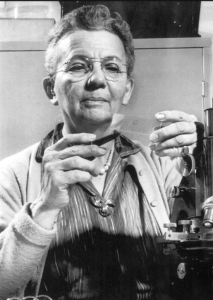
43. Florence Seibert, Biochemist (1897-1991)
Florence Seibert was a biochemist who developed a method for preventing pyrogens in distilled water to improve the safety of intravenous injections. Seibert also developed a procedure for obtaining tuberculin purified protein derivative (PPD), which led to the development of a test for tuberculosis (TB). (Biography)
Try this Scopes lesson: Secchi Disk For Water Quality
Video: Tribute to Florence Seibert an American biochemist developed the protein for tuberculosis skin test
Career connection: Biochemist
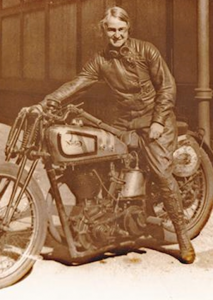
44. Beatrice (Tilly) Shilling, Aeronautical Engineer (1909-1990)
Beatrice (Tilly) Shilling came up with a solution to a problem Hurricane fighter-bomber and Spitfire fighter planes had in WWII with engines stalling during dives and other negative g-force maneuvers. (Biography)
Try this Scopes lesson: Quadcopter Challenge
Book Recommendations: BEATRICE SHILLING A GIRL WITH GRIT! By Elsie O’Neill (Author) (Middle School)
Video: Most Influential Women – Beatrice “Tilly” Shilling
Career connection: Aerospace Engineer
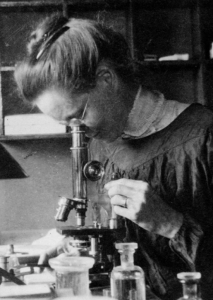
45. Nettie Stevens, Geneticist (1861-1912)
Nettie Stevens discovered sex chromosomes (in the same year as Edmund Beecher Wilson). (Biography)
Try this Scopes lesson: DIY Bio
Video: https://www.youtube.com/watch?v=GaHcbIBCowY&ab_channel=HertfordCollege%2COxford
Career connection: Cytogenetic Technologist
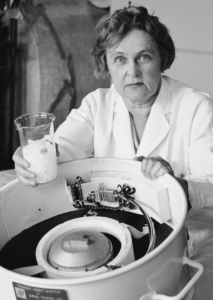
46. Maria Telkes, Physicist (1900-1995)
Maria Telkes, sometimes called the “Sun Queen,” focused her work on ways to use and harness solar energy. She devised the system (using Glauber salts and solar power) for the Dover Sun House, the first solar-heated house. She also invented a solar oven and a portable solar distillation device used during World War II to desalinate water. (Biography)
Try this Scopes lesson: Solar Cap, Make A Sundial
Video: Maria Telkes: Google celebrates ‘the sun queen’ with a doodle
Career connection: Energy Engineer and Solar Energy Systems Engineer
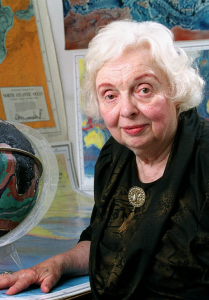
47. Marie Tharp, Geologist and Oceanographic Cartographer (1920-2006)
Marie Tharp co-created the first scientific map of the floor of the Atlantic Ocean. Her work helped prove theories of plate tectonics and continental drift. (Biography)
Try this Scopes lesson: Sea Floor Bathymetry
Book Recommendations: Ocean Speaks: How Marie Tharp Revealed the Ocean’s Biggest Secret by Jess Keating (Author), Katie Hickey (Illustrator) (K-3rd Primary) Soundings: The Story of the Remarkable Woman Who Mapped the Ocean Floor by Hali Felt (Author) (Middle School)
Video: How One Brilliant Woman Mapped the Secrets of the Ocean Floor | Short Film Showcase
Career connection: Cartographer or Photogrammetrist
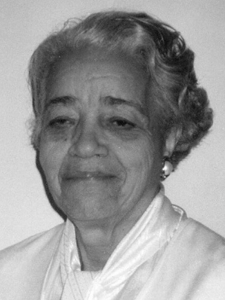
48. Dorothy Vaughan, Computer Scientist and Mathematician (1910-2008)
Dorothy Vaughan was a computer scientist and mathematician. She was part of the group of “human computers” depicted in the Hidden Figures movie. As NASA adopted the use of computers, Vaughan taught herself FORTRAN and became part of NASA’s Analysis and Computation Division (ACD). She also worked on the Scout Launch Vehicle Program. (Biography)
Try this Scopes lesson: SCRATCH The Itch Of Computer Programming
Book Recommendations: Computer Decoder: Dorothy Vaughan, Computer Scientist by Andi Diehn (Author), Katie Mazeika (Illustrator) (K-3rd Primary), Dorothy Vaughan: NASA’s Leading Human Computer (Movers, Shakers, and History Makers) by Deirdre R. J. Head (Author) (4th-6th Intermediate), Women Who Count: Honoring African American Women Mathematicians by Shelly M. Jones (Author) (4th-6th Intermediate), Hidden Women: The African-American Mathematicians of NASA Who Helped America Win the Space Race by Rebecca Rissman (Author) (Middle School), Hidden Figures: The American Dream and the Untold Story of the Black Women Mathematicians Who Helped Win the Space Race by Margot Lee Shetterly (Author) (High School)
Movie: Hidden Figures (2016)
Video: Hidden Stories: Dorothy Vaughan
Career connection: Computer Programmer
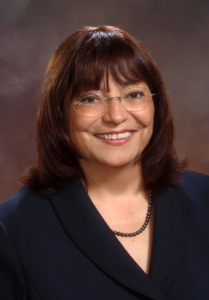
49. Lydia Villa-Komaroff, Biologist (1947-)
Lydia Villa-Komaroff is a biologist whose research on recombinant DNA uncovered a way to use bacteria cells to make insulin. (Biography)
Try this Scopes lesson: Virtual Reality Cell Creation
Video: https://www.youtube.com/watch?v=gEo5yntDZlA&ab_channel=TeachingExcellenceMIT
Career connection: Biologist
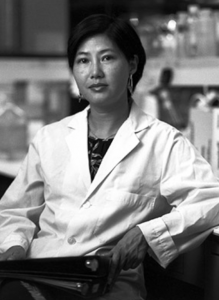
50. Flossie Wong-Staal, Virologist and Molecular Biologist (1946-2020)
Flossie Wong-Staal was the first to clone the human immunodeficiency virus (HIV). Her work helped show that HIV causes acquired immunodeficiency syndrome (AIDS). (Biography)
Try this Scopes lesson: Unplugged: Makers Making Good – Stopping The Spread
Video: https://www.youtube.com/watch?v=FBjjW0zcUBE&ab_channel=HertfordCollege%2COxford
Career connection: Biologist
Tagged: Women in STEM, Women's History Month
